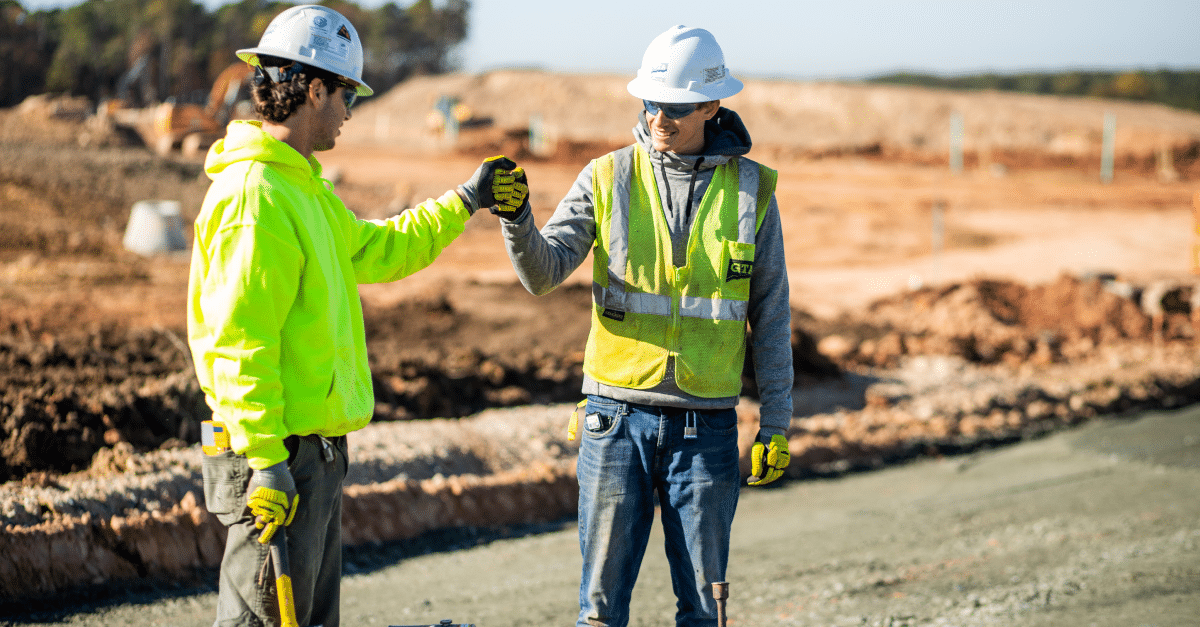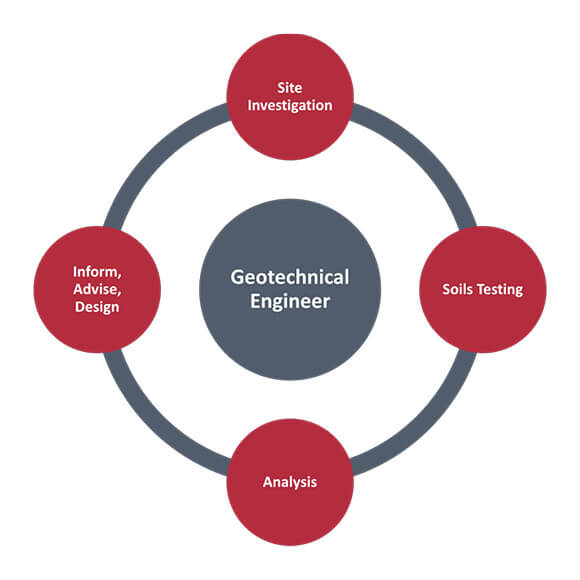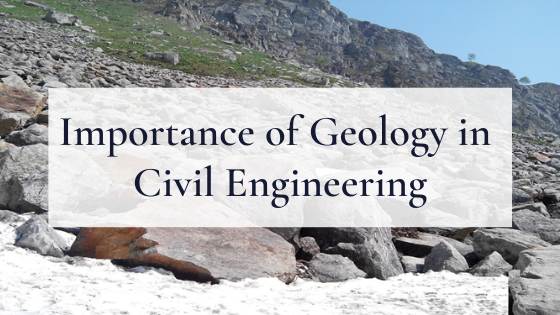Everything about Geotechnical Engineering For Construction Projects
Everything about Geotechnical Engineering For Construction Projects
Blog Article
The 9-Second Trick For Geotechnical Engineering For Construction Projects
Table of ContentsGeotechnical Engineering For Construction Projects - The Facts6 Simple Techniques For Geotechnical Engineering For Construction ProjectsAll about Geotechnical Engineering For Construction ProjectsThe smart Trick of Geotechnical Engineering For Construction Projects That Nobody is Talking AboutAn Unbiased View of Geotechnical Engineering For Construction ProjectsTop Guidelines Of Geotechnical Engineering For Construction ProjectsTop Guidelines Of Geotechnical Engineering For Construction Projects
and Kovacs, W. (1981 ), An Introduction to Geotechnical Design, Prentice-Hall, Inc. Deep Check Tech (2023 ): Deep Check Technology uncovers covert structures at the website of Denmark's highest structure. "Geofrost Coring". GEOFROST. Gotten 20 November 2020. Han, Jie (2015 ). Concepts and Practice of Ground Enhancement. Wiley. ISBN 9781118421307. RAJU, V. R.Ground Renovation Technologies and Case Histories. Singapore: Research Study Posting Providers. p. 809. ISBN978-981-08-3124-0. Ground Improvement Concepts And Applications In Asia. Pariseau, William G. (2011 ). Design analysis in rock auto mechanics. CRC Press. Hegde, A.M. and Palsule P (Geotechnical Engineering for Construction Projects).S. (2020 ), Efficiency of Geosynthetics Reinforced Subgrade Subjected to Repetitive Automobile Loads: Experimental and Numerical Research Studies.
Cengage Learning, Stamford, 666 p. Atkinson, J., 2007. The auto mechanics of soils and foundations. The Observational Technique in ground design concepts and applications.
What Does Geotechnical Engineering For Construction Projects Mean?
Laboratory and area screening plays an important function in this process. By removing samples from the planet's subsurface and applying a collection of examinations, geotechnical engineers can forecast the behaviour of dirt layers and assess their viability for various building and construction endeavours. The significance of geotechnical engineering in civil engineering can not be overemphasized, attributable to several aspects: The initial action in any kind of geotechnical study entails identifying the dirt type at the building and construction site.
Comprehending these qualities makes certain that only appropriate dirt kinds are picked for the development, thus avoiding possible structural failures. The structure works as the bedrock of any building job. Picking the appropriate structure kind is a decision that hinges on the extensive analysis supplied by geotechnical design. This makes sure the long life and security of frameworks by accommodating the lots they will bear.

Geotechnical website examination is a vital action in the preparation and implementation of any type of building job. It includes the collection and analysis of data associated with the physical properties of soil and rock below a proposed construction website. This details is essential for the layout and building of risk-free, stable, and sustainable frameworks.
An Unbiased View of Geotechnical Engineering For Construction Projects
In this blog site, we will dive into the importance of geotechnical website investigation, its different components, and exactly how it benefits building and construction projects. Geotechnical site examination, likewise known as subsurface expedition, involves a collection of activities targeted at figuring out the dirt, rock, and groundwater conditions at a building and construction site. The key objectives are to determine potential geotechnical dangers, evaluate the design residential properties of subsurface materials, and provide referrals for the design and building and construction of foundations, keeping walls, and various other frameworks.
The desk study helps in identifying potential geotechnical concerns and intending the succeeding fieldwork. This entails observing the topography, water drainage patterns, existing frameworks, plants, and any type of indicators of instability or erosion.
Facts About Geotechnical Engineering For Construction Projects Revealed
Superficial test pits are excavated to straight observe and sample the dirt and rock. This method is useful for researching the upper layers of the subsurface and recognizing near-surface threats. Non-invasive geophysical techniques, such as seismic refraction, ground-penetrating radar (GPR), and electric resistivity tomography (ERT), are utilized to map subsurface problems and spot abnormalities.
Soil and rock examples collected throughout the area this hyperlink examination undergo laboratory screening to determine their physical and mechanical buildings. Usual research laboratory tests include grain dimension analysis, Atterberg limitations, compaction examinations, triaxial shear examinations, and loan consolidation tests. These examinations provide vital information for geotechnical analysis and style. The information accumulated from the desk research study, website reconnaissance, field investigation, and research laboratory screening are evaluated and analyzed to develop a detailed understanding of the subsurface problems.
The key benefit of geotechnical site investigation is making certain the safety and stability of structures. By comprehending the subsurface conditions, engineers can develop foundations and other architectural straight from the source elements that can stand up to the tons and environmental forces they will be subjected to. This decreases the risk of settlement, subsidence, and structural failure.
Some Known Factual Statements About Geotechnical Engineering For Construction Projects
Understanding dirt features can direct the option of excavation strategies, dewatering methods, and ground renovation actions. This ensures reliable and secure construction practices. Geotechnical site investigations are commonly needed by constructing codes and regulations. Following these needs makes sure compliance with legal and safety requirements, preventing prospective legal obligations and job delays.
This info is important for job managers, architects, and professionals in establishing reasonable schedules, budgets, and backup strategies. Geotechnical Engineering for Construction Projects. Skyscraper in a Coastal AreaIn a seaside city, a skyscraper household building was intended on a website with thought loosened sand deposits and a high water table. A thorough geotechnical examination, including borehole drilling, CPT, and geophysical surveys, was conducted
Indicators on Geotechnical Engineering For Construction Projects You Should Know
Based upon these findings, the foundation layout was changed to consist of deep stack foundations prolonging into stable strata, and ground improvement strategies, such as vibro-compaction, were carried out to alleviate liquefaction dangers. This proactive strategy made certain the security and stability of the building while staying clear of expensive post-construction remediation. Framework Advancement on a Sloping TerrainA major infrastructure task, including the building of a highway and bridges, was intended on an uneven terrain with high slopes.

The Leaning Tower of Pisa (Italy), a legendary building wonder, is notorious for its unintentional tilt from significant geotechnical concerns. The tower's foundation was improperly designed to deal with the soft, unsteady soil underneath it, causing uneven negotiation and its distinctive lean. Our world is populated with outstanding framework projectsfrom towering high-rises to sprawling bridgesall standing testament to the evolution of the different construction devices and techniques offered.
Geotechnical engineering is a specific area within civil engineering that concentrates on researching the actions of earth materials. This branch delves deep right into the groundinvestigating exactly how the dirt, rock, and groundwater at a construction site can influenceand be affected bythe framework that we erect on and into them. Prior to a solitary block is laid or a concrete foundation poured, geotechnical designers probe right into the earthgathering critical data concerning the website's soil structure, rock you can look here structure, and groundwater degrees.
About Geotechnical Engineering For Construction Projects

is a device used to evaluate the stability and load-bearing ability of heaps throughout setup, leveraging the concept of wave breeding. It optimizes construction efficiency by giving real-time evaluations, thus guaranteeing risk-free and efficient heap structures. Among the functional applications of geotechnical engineering involves making a decision and implementing the appropriate methods for structure construction.
Stack driving represents even more than the plain act of inserting architectural components right into the ground. As a matter of fact, it is a carefully managed process of transferring a framework's load past the less secure dirt layers better to the surfacedown to the more considerable strata that lie beneath. In the case of heap driving, take into consideration how geotechnical designers expertly utilize this strategy to uniformly distribute the framework's weight.
Report this page